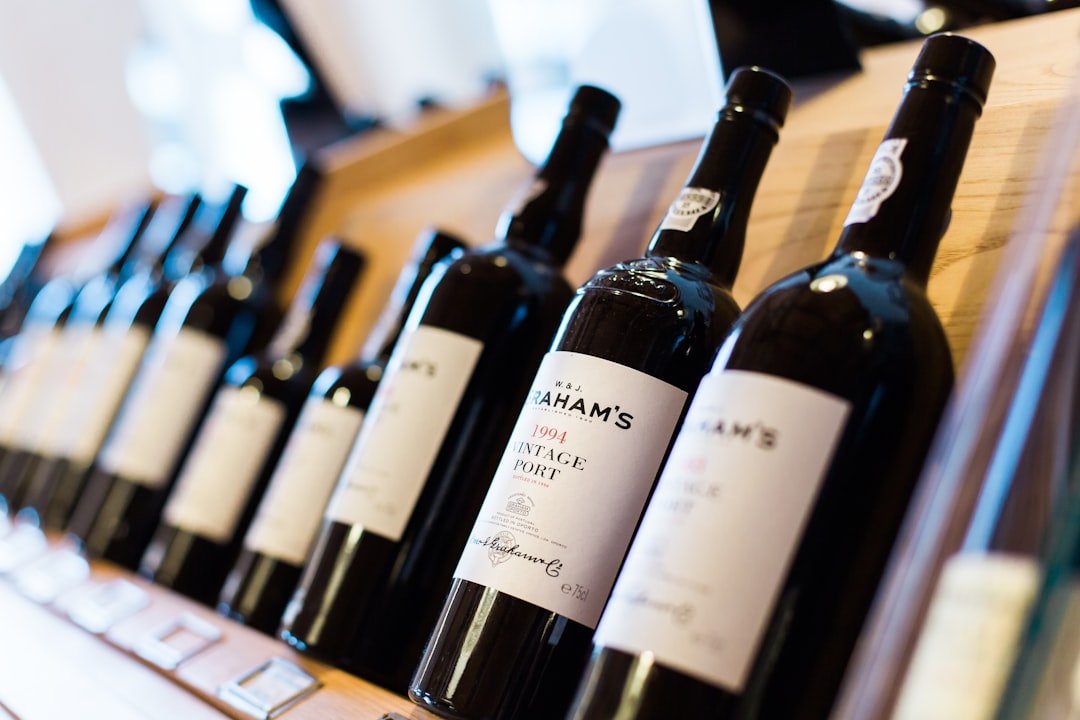Do you love to enjoy a glass of red wine but don’t have the luxury of owning a wine fridge? Don’t worry, there are still ways to store your red wine so that it stays at its best for as long as possible. In this article, we’ll show you how to store red wine without a wine fridge and ensure it keeps its quality.
We’ll cover the basics on how to store your red wines correctly and safely, even if you don’t have the proper equipment. You’ll be able to keep your favorite bottles in perfect condition with minimal effort and cost. And who knows, maybe after reading this article you’ll be inspired enough to invest in a wine fridge!
So if you’re ready and eager to learn more about storing red wines without a wine fridge, keep reading! We guarantee that by following our advice, your vino will taste just as good as if it was kept in one of those fancy fridges.
Table of Contents
What Is Red Wine
Red wine is a type of alcoholic beverage made from fermented grapes. It is typically produced from dark-colored grape varieties, such as Cabernet Sauvignon, Merlot, Pinot Noir and Syrah. Red wines have a range of flavor characteristics, including fruity and spicy tones, which can depend on the type of grape used and the region where it was grown.
Storing red wine correctly is important to ensure its quality. To ensure longevity and maintain its flavor, red wine should be stored in a cool and dark place with consistent temperatures between 12°C (53°F) and 15°C (59°F). It should also be kept away from vibrations or other disturbances.
If you don’t own a wine fridge, there are still several ways to store red wine correctly. One option is to store it in your refrigerator; however, it should be placed in the lower part of the fridge at a temperature between 7°C (45°F) and 10°C (50°F). Alternatively, you can store the bottles in a cool basement or root cellar with temperatures between 8ºC (46ºF) and 18ºC (64ºF). It’s important to ensure that the room does not have excessive humidity or fluctuations in temperature.
For an even more extreme solution, you could fill a cooler with wet towels or ice packs to create a makeshift refrigerator for your red wine bottles. As long as you keep the temperature monitored regularly, this solution could help keep your red wines tasting great for up to two months.
Temperature For Storing Red Wine
Maintaining the ideal temperature is key to storing red wine correctly. The optimal temperature range for storing red wine is between 12°C (53°F) and 15°C (59°F). If the wine is stored in a fridge, it should be placed in the lower part of the refrigerator at a temperature of between 7°C (45°F) and 10°C (50°F). Alternatively, you can store the bottles in a cool basement or root cellar with temperatures between 8ºC (46ºF) and 18ºC (64ºF).
It’s also important to note that sudden changes in temperature can adversely affect the flavor of your red wine. Hotter temperatures will accelerate aging, while colder temperatures can make it taste flat. To maintain consistent temperatures, you may want to invest in a small thermometer or thermocoupler to monitor the temperature of your storage area.
Another factor to consider when storing red wine is humidity. Red wines are typically stored at humidity levels ranging from 50% to 80%. Too much humidity can cause mold and mildew growth on labels and corks, which could damage your bottles. On the other hand, too little humidity can cause corks to dry out and shrink, allowing oxygen into the bottle and spoiling the wine. Maintaining an appropriate humidity level is essential for preserving your red wines properly.
In order to ensure longevity and maintain their flavor, it’s important that all types of red wines are stored correctly. Keeping them away from sunlight and vibrations as well as monitoring their temperature and humidity levels regularly will help keep them tasting great for months or even years.
Benefits Of A Wine Fridge
A wine fridge is a great tool for storing red wine, as it provides a consistent and safe environment. These fridges are designed to maintain the optimal temperature range of 12°C (53°F) to 15°C (59°F), and they keep the humidity levels in check. Wine fridges also come with adjustable shelves so you can store bottles at different angles, which helps slow down the aging process. Additionally, many models come with tinted glass doors that block harmful UV rays from reaching your bottles, protecting them from possible damage caused by sunlight exposure.
However, if you don’t have access to a wine fridge, there are still other ways to store your red wines properly. You can place bottles in cardboard boxes or wooden cases and put them in a cool basement or root cellar away from direct light and vibrations. Make sure the temperature does not fluctuate too much and monitor it regularly with a thermometer. You’ll also need to check that the relative humidity is between 50% and 80%.
Storing red wine without a wine fridge may take more effort but with proper planning and monitoring of temperature and humidity levels, you can ensure your wines stay fresh for months or even years. It’s important to remember that when it comes to preserving red wines correctly, paying attention to details such as temperature, humidity and light exposure are key factors for success.
How To Store Red Wine Without A Wine Fridge
Types Of Storage Containers
When it comes to storing red wine without a wine fridge, finding the right storage container is key. There are various types of containers available, so it’s important to choose the one that best fits your needs and budget.
The most common type of storage container for red wine is cardboard boxes or wooden cases. These are relatively inexpensive and come in different sizes, making them a great option for both larger and smaller collections. Cardboard boxes may not provide as much protection from light as other types of containers, but they can be effective if stored in dark areas such as a basement or root cellar. Wooden cases provide more protection from light exposure and also help maintain humidity levels better than cardboard boxes.
Vacuum-sealed bags are another popular option for storing red wines without a wine fridge. These bags protect the bottles from oxygen exposure by creating an airtight seal which helps extend the life of the wine. They also come with handles so they can be easily transported and don’t take up too much space when stored away. Vacuum-sealed bags tend to be more expensive than other types of containers but they offer great protection for your wines over long periods of time without requiring any extra effort on your part.
No matter which type of storage container you choose, make sure to keep your bottles away from direct light and vibrations, monitor temperature and humidity levels regularly, and store them at a consistently cool temperature range between 12°C (53°F) and 15°C (59°F). With these tips in mind, you should have no trouble preserving your red wines safely until you’re ready to enjoy them!
Choosing The Right Location
In addition to choosing the right storage container for your red wine, it’s also important to select an appropriate location. While a wine fridge is ideal for long-term storage of wines, there are other options available depending on your needs and budget.
The best place to store red wine is in a dark and cool environment. Cellars and basements are great options as they often provide natural insulation from outside temperature fluctuations. If you don’t have access to a cellar or basement, you can also purchase an insulated box or cooling unit which will help keep the temperature consistent throughout the year. Make sure that wherever you choose to store your wines, it is away from any sources of heat such as radiators or direct sunlight.
It’s also important to make sure that the area you choose is free from vibrations which can damage the delicate structure of red wine over time. Avoid storing bottles near washing machines, dishwashers, musical instruments, etc., and make sure that any containers used for storing wines are tightly sealed so that no moisture or air leaks in.
Storing red wine without a wine fridge requires some extra consideration when selecting the right container and location for your bottles. With proper care taken during storage, you’ll be able to enjoy your wines at their best when it’s time to open them!
Choosing The Right Temperature And Humidity Levels
In addition to choosing the right location, it’s also important to think about temperature and humidity levels when storing red wine without a wine fridge. While red wines generally prefer cooler temperatures than whites, they should never be stored in a place that is too cold or too hot. The ideal temperature range for long-term storage is between 45-65°F (7-18°C). This can be achieved by avoiding any sources of heat in the area, such as radiators or direct sunlight.
Humidity is also an important factor when it comes to storing red wine. Too much moisture can cause corks to swell and shrink, resulting in air leaks that could damage your bottles over time. On the other hand, too little humidity can cause corks to dry out and shrink away from the bottle’s neck, allowing oxygen to enter and spoil your wine. The ideal relative humidity for storing red wines is around 70%. If your storage area doesn’t provide this level of humidity naturally, you may want to consider investing in a humidifier or using a damp cloth laid over bottles periodically.
When it comes to keeping your red wines safe and sound without a wine fridge, the key is to pay attention to all factors involved – from container choice and location selection to temperature control and humidity regulation. With some careful consideration during storage preparation, you can ensure that your wines will remain in top condition until you’re ready to enjoy them!
Avoiding Light Exposure
Light exposure is another factor to consider when storing red wine without a wine fridge. Direct sunlight can cause wines to age prematurely, resulting in an unpleasant taste and smell. If possible, it’s best to choose a location that is dark and away from windows or other sources of light. You can also use opaque containers, such as cardboard boxes or wooden crates, to help protect your bottles from UV rays.
Temperature fluctuations are also something to keep in mind when storing red wine without a wine fridge. Rapid changes in temperature can cause the liquid inside the bottle to expand and contract, eventually leading to air leaks and oxidation of your precious wines. To avoid this issue, you should try to store your wines in an area that has minimal shifts in temperature from day-to-day. This could mean finding an underground storage space or using a cool basement if available.
Finally, it’s important to check on your stored wines regularly. Over time, corks may become brittle or shrink away from the bottle’s neck, so be sure to inspect each bottle before opening it up for consumption. Additionally, if you notice any signs of mold or mildew on the outside of your bottles, discard them as soon as possible – mold spores could have easily found their way inside! With proper care and attention during storage preparation and maintenance, you can safely store your red wines without a wine fridge for years to come!
Preventing Corks From Drying Out
In addition to protecting red wine from light and temperature fluctuations, it’s also important to consider how best to prevent the corks from drying out. When the cork is exposed to air, it can start to shrink, which can allow oxygen into the bottle and cause oxidation. To avoid this issue, you should keep your bottles in an upright position and store them at a consistent humidity level between 70-80%. If you don’t have access to a climate-controlled space, you could always use some simple tricks like placing a wet towel or paper towel in the same area as your bottles.
You should also make sure that each bottle is securely capped with its original cork. This will provide an extra layer of protection against air leaks and keep your wines fresh for longer. Additionally, if using cardboard boxes or other containers for storage, be sure to line them with plastic wrap or wax paper before adding your bottles. This will help trap moisture around your corks and keep them hydrated while inside the box.
Lastly, if you notice any signs of mold growth on the outside of stored bottles or on their corks, discard them immediately as this could indicate that oxygen has already started to affect the contents inside. By following these tips and ensuring proper storage conditions for your red wines without a wine fridge, you can enjoy delicious vino for years to come!
Establishing Maintenance Routine
In addition to ensuring proper storage, it’s also important to establish a regular maintenance routine when storing red wine without a wine fridge. This will help ensure that the quality of your wines is maintained for as long as possible.
To begin with, you should check your bottles at least once a month to make sure that the corks are still moist and the caps are secure. If you notice any signs of leakage or mold growth, it’s best to discard these bottles and replace them with fresh ones. Additionally, you should rotate your bottles so that those which have been in storage for longer are used before the newer ones. This will help keep all of your wines tasting as fresh as possible by preventing older bottles from becoming too oxidized.
Finally, if you’re using cardboard boxes or other containers to store your bottles in, be sure to inspect them regularly for any signs of wear or tear. Replacing these boxes every few months can help keep your wines safe and in peak condition. With regular maintenance and adherence to proper storage protocols, you can enjoy delicious red wines without worrying about their quality deteriorating over time.
Alternatives To Storing With A Wine Fridge
Now that you have an understanding of the maintenance routine needed to properly store red wine without a wine fridge, let’s explore some alternatives for storing your bottles. While it’s ideal to keep your wines in a wine fridge, there are still other options available if you don’t have one.
One option is to store your bottles in a cool and dark place such as a basement or closet. Make sure that the temperature in this area never exceeds 70 degrees Fahrenheit, as higher temperatures can cause the flavor of the wines to become compromised over time. Additionally, try to avoid any areas with strong odors, as these may also affect the flavor of your wines.
Another option is to invest in specialized containers or racks which are designed specifically for storing wine without a fridge. These racks come in various sizes and styles and can help maintain optimal conditions for your bottles without taking up too much space or requiring additional energy use. Whatever methods you choose, make sure that they provide adequate protection from heat and light sources while keeping your bottles easily accessible. This way, you can enjoy your favorite wines at their best no matter what kind of storage solution you have on hand.
Frequently Asked Questions
How Long Can Red Wine Be Stored Without A Wine Fridge?
Storing red wine without a wine fridge is an important question many people have, and it’s important to know how long red wine can last in this situation. There are various factors that can affect how long the wine will last, such as heat, light and oxygen exposure, so it’s essential to understand these elements when storing red wine without a cooler.
One of the main risks when storing red wine without a fridge is oxidation, which occurs when the molecules in the liquid react with oxygen. This reaction causes the flavor and color of the wine to change over time. To prevent oxidation, it’s important to store your red wines in dark, cool places away from any direct sunlight or heat sources. The temperature should be consistent – ideally between 45°F-65°F (7°C-18°C). If possible, store bottles on their side so that all of the liquid is touching the cork, as this will help keep it moist so it can better block out air.
If you follow these guidelines for storage conditions, then your bottle of red wine should be able to last between 3-5 years depending on its quality and vintage. You may even find that some older vintages improve with age if stored properly! It’s also worth noting that not all wines are meant to be aged – for example dry whites and rosés generally have shorter shelf lives than full-bodied reds like Cabernet Sauvignon or Merlot.
Therefore if you’re looking for a long term storage solution for your bottle of red wine without a fridge, then following these tips will ensure that your bottle will remain at its best quality while maximizing its longevity.
What Is The Best Type Of Storage Container For Red Wine?
When it comes to storing red wine, there are several factors to consider. What type of storage container you use can be just as important as the temperature and humidity of the environment. In this article, we’ll discuss what is the best type of storage container for red wine.
The ideal storage container for red wine depends largely on how long you plan on storing it. If you plan to drink the wine within a few days of purchase, a simple cardboard or paper box will work fine. This type of container will keep the bottle away from direct sunlight and other environmental pollutants like smoke or dust that could affect the taste of your wine.
For long-term storage, a more permanent option is preferable. A glass or ceramic decanter with an airtight lid is ideal for keeping your wine fresh and tasting great over time. This type of container is designed to protect the flavor, aroma, and color of your wine without affecting its quality in any way. Additionally, this style of container eliminates any additional oxygen exposure which can cause oxidation in certain wines over time.
No matter what kind of storage vessel you choose, make sure it’s made from materials that won’t interact with or alter the taste or quality of your red wine. Glass or ceramic containers are generally considered safe for this purpose and can keep your favorite vintages tasting great for years to come.
Is It Better To Store Red Wine In A Cool, Dry Place Or A Warmer, Humid Place?
The debate over the best environment for red wine storage is an ongoing one. On one side, some argue that red wines should be stored in a cool, dry place to prevent spoilage and retain flavor. On the other side, proponents of storing red wines in a warmer, humid area suggest this can better preserve the wine’s fruity aromas and complexity.
In a cool, dry environment, temperatures should range between 45-65°F (7-18°C). Such conditions reduce the risk of bacterial growth while preserving the flavor compounds that give reds their distinct taste profiles. Also, since this type of storage helps to keep corks from drying out and shrinking over time, it can help to maintain the integrity of the liquid inside. All these factors make a cooler, drier setting suitable for long-term storage or aging.
Yet some feel that storing red wines in warmer environments with slightly higher humidity levels can be beneficial as well. When kept between 55-70°F (12-21°C), with humidity levels ranging from 50-70%, this kind of environment may favor the preservation of fruity aromas and complex flavors within certain types of wines. This kind of temperature range encourages malolactic fermentation and allows subtle changes in tannin structure to take place over time without fear of bacterial growth – ideal for more delicate wines like Pinot Noir or Beaujolais Nouveau.
Ultimately, when deciding how best to store red wine without a wine fridge, it comes down to personal preference and what type(s) of wine are being stored. For those wishing to age their bottles longer-term with minimal risk of spoilage or flavor alteration due to environmental conditions, a cool, dry space may be preferable; whereas those who want to let their bottles develop more complex characteristics might consider opting for a warmer spot.
How Can I Prevent Corks From Drying Out Without A Wine Fridge?
Cork is a key ingredient to storing red wine correctly, as it helps to protect the flavor and age of the wine. However, without a wine fridge, cork can easily become dry and cracked. This raises the question: how can you prevent corks from drying out without a wine fridge?
To keep your corks moist and intact, it’s best to store your red wines at a consistent temperature around 55 degrees Fahrenheit. You also want to make sure that you keep your bottles in an area with low humidity levels in order to avoid any moisture from seeping into the bottle. If possible, try to store them upright so that there is no air circulation inside the bottle as this could also cause the cork to dry out.
In addition, it’s always important to check on your bottles regularly for signs of damage or leakage. Be sure to wipe down your bottles before storing them in order to remove any dust or dirt which may be clinging onto them. You should also check for any signs of mold growth which can occur when there is too much humidity present in an environment. Finally, if you do find that your corks have become dry and cracked, it’s best to discard those bottles immediately and replace them with new ones.
Storing red wine without a wine fridge requires some extra attention and care but following these tips will help ensure that your corks remain moist and intact over time. Properly stored red wines will maintain their flavors longer and offer better tasting experiences for years to come!
Are There Any Alternatives To Storing Red Wine Without A Wine Fridge?
Are there any alternatives to storing red wine without a wine fridge? This is an important question for those who appreciate the flavor and aroma of red wines but don’t have access to a wine fridge. Without a proper storage solution, it can be difficult to protect the integrity of your bottles as they age. Thankfully, there are several methods that can help you keep your wines in optimal condition.
One option is to store your bottles in a cool place away from direct sunlight and sources of heat. A basement or cellar is ideal, but if you don’t have access to one then a cool closet or cupboard will do. You should also make sure the temperature remains consistent and does not fluctuate too much, as this can cause corks to dry out or even shrink over time. Additionally, try to keep the humidity level at around 50-70% as this will help ensure that your corks remain properly sealed and prevent oxidation of the wine itself.
Another way to store your red wines without a wine fridge is by using specialized containers such as vacuum-insulated wine bags or glass jars with cork lids. These containers provide an airtight seal that helps keep out oxygen while maintaining consistent temperatures inside the container. They are also great for taking with you when traveling since they can be easily transported without worrying about them breaking or spilling their contents. Finally, make sure that any glass containers used have thick walls so they won’t break if exposed to sudden changes in temperature or pressure.
Storing red wines without a wine fridge doesn’t have to be overly complicated; just follow these tips and you’ll be able to preserve the flavor and aroma of your favorite wines for years to come! With proper care and attention, you’ll be able enjoy delicious bottles of vino whenever you want!
Conclusion
Storing red wine without a wine fridge is possible, but it requires careful consideration. The best container for storing red wine is a dark glass bottle with a synthetic cork or screw cap. Keeping the bottles in a cool, dry place will help to preserve the taste and quality of the wine over time. To prevent corks from drying out, you can use wax or oil to seal them before storage.
If you don’t have access to a wine fridge, there are still some alternatives that can help you keep your red wine fresh and delicious. Investing in an insulated bag or box will help maintain consistent temperatures while also protecting the bottles from sunlight and other environmental factors. You can also try keeping your bottles in an underground cellar if you have one available.
Overall, storing red wine without a wine fridge is definitely doable if you take the right precautions. Investing in dark glass bottles with tight sealing caps and making sure they’re stored in a cool, dry place should help you keep your red wines tasting great for longer periods of time!








